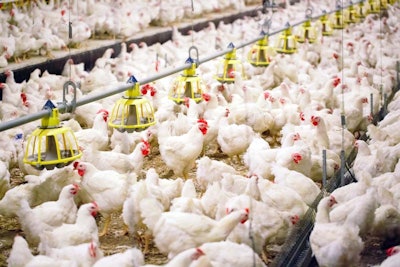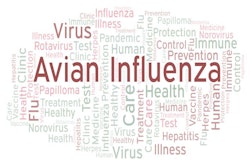
Controlling coccidiosis is a major challenge to the poultry industry, however a multi-faceted management approach can help prevent the disease in broilers even without the use of antibiotics.
“In the past, we've used a two-pronged approach to managing enteric disease,” coccidiostats and antibiotics, Dr. Stephen Collett, consultant veterinarian, 4FC Consulting, explained at the Alltech ONE Conference.
“Unfortunately, with consumer pressure to remove antibiotics for the diet, we've caused an imbalance by removing those antibiotics. And we're no longer controlling the dysbacteriosis that forms as a result of coccidiosis control, so this has to be corrected.”
Coccidiostats, chemicals and vaccines
The best management program to control coccidiosis depends on several factors.
There are differing definitions of antibiotics depending on where you are in the world. For example, in the U.S., that definition includes antibacterials and anticoccidials, whereas in other parts of the world, a type of coccidiostats known as ionophores are allowed in programs that are classified as “raised without antibiotics.”
“We have to clarify is that ‘raised without antibiotics’ is really a case of different strokes for different folks,” Collett added.
“If we can't use ionophores, we have to shift our attention to chemicals. Unfortunate side effect is that the organism tends to generate resistance to the chemical very quickly.”
Vaccination against coccidiosis is another approach that has grown in popularity with ABF poultry programs. The coccidiosis vaccine exposes birds to drug-sensitive strains of live coccidia and is administered by water-based spray, gel spray or gel drop, typically at hatch.
“If we compare the case of no control, and we look at vaccination control, what we've done is we've exposed the birds to the cocci parasite very early in life – in other words, at day of hatch. That accelerates the development of resistance immunity. And what it does is it allows that bird to get rid of the problem very early on, between two and three weeks of age,” said Collett.
Stocking density is also an important factor to consider in coccidiosis control.
Litter management techniques
Litter management is one of the easiest ways to control coccidiosis.
The parasite behind coccidiosis begins as an oocyst – a life stage like an egg – in poultry litter and can only mature or sporulate if the litter is hot and humid. Growers that ensure that poultry litter stays as dry as possible through drinker and ventilation management can interrupt the coccidia life cycle, preventing the spread of disease.
“One of the things that we tend to miss, and this is probably an important difference between continuous use of litter and using new litter, is that ammonia is highly toxic to oocysts,” Collett said.
This means that in places where litter is reused, like the U.S., coccidiosis replication can be better suppressed.


















